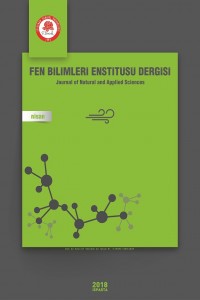Design of a Respiration Pattern Detecting Device based on Thoracic Motion Tracking with Complementary Filtering
Öz
The respiration pattern represents the volume of air in the lungs as a function of time during human respiration process. Abnormal changes in this pattern can be signs of several diseases or conditions. There exit several respiration pattern detection methods. Among them, an easy technique relies on sensing the movements of thoracic and (or) abdominal regions. In this study, a device based on thoracic motion tracking with complementary filtering has been developed to detect the respiration pattern. The device is equipped with a motion sensor placed in a flexible belt housing a three-axis accelerometer and a three-axis gyroscope and a UART-to-USB converter providing computer connectivity. The device is operated by a microcontroller that controls the operation of the motion sensor, applies complementary filtering to the motion data acquired and transfers the results to a personal computer. The device is powered from the computer it is connected to. Experiments with using the device during continues inhaling and exhaling, deep inhaling followed by breath-hold and deep exhaling followed by breath-hold respiration activities in standing, lying and seated postures show that thoracic motion tracking with complementary filtering may provide quite well respiration pattern detections.
Anahtar Kelimeler
Respiration Thoracic motion; Motion tracking; Complementary filtering
Kaynakça
- [1] Ionescu, C.M. 2013. Human Respiratory System: An Analysis of the Interplay between Anatomy, Structure, Breathing and Fractal Dynamics. Springer.
- [2] Hammerschmidt, S., Sandvoß, T., Gessner, C., Schauer, J., Wirtz, H. 2003. High in comparison with low tidal volume ventilation aggravates oxidative stress-induced lung injury. Biochimica et Biophysica Acta (BBA) - Molecular Basis of Disease, 1637, 75-82.
- [3] Al-Khalidi, F.Q., Saatchi, R., Burke, D., Elphick H., Tan, S. 2011. Respiration rate monitoring methods: A review. Pediatric Pulmonology, 46, 523-529.
- [4] Kompis, M., H. Pasterkamp, H., Oh, Y., Wodicka, G. 1997. Distribution of inspiratory and expiratory respiratory sound intensity on the surface of the human thorax. Proc. of 19th Int. IEEE/EMBS Conference, 2047-2050.
- [5] Moussavi, Z., Leopando, M.T., Pasterkamp, H., Rempel, G. 2000. Computerized acoustical respiratory phase detection without airflow measurement. Medical and Biological Engineering and Computing, 38, 198–203.
- [6] Kahya, Y.P., Cini, U., Cerid, O. 2003. Real-time regional respiratory sound diagnosis instrument. IEEE EMBS, 3098-3101.
- [7] Elmar Messner, E., Hagmüller, M., Swatek, P., Smolle-Jüttner, F., Pernkopf, F. 2017. Respiratory airflow estimation from lung sounds based on regression. IEEE ICASSP, 1123-1127.
- [8] Hossain, I., Moussavi, Z. 2002. Respiratory airflow estimation by acoustical means. IEEE EMBS, 1476-1477.
- [9] Yeginer, M., Ciftci, K., Cini, U., Sen, I., Kilinc, G., Kahya, Y.P. 2004. Using lung sounds in classification of pulmonary diseases according to respiratory subphases. IEEE EMBS, 482-485.
- [10] Ciftci, K., Kahya, Y.P. 2008. Respiratory airflow estimation by time varying autoregressive modeling. IEEE EMBS, 347-350.
- [11] Matsubara A., Tanaka, A. 2002. Unconstrained and noninvasive measurement of heartbeat and respiration for drivers using a strain gauge, SICE, 1067-1068.
- [12] Brans, Y.W., Hay, W.W. 1995. Physiological Monitoring and Instrument Diagnosis in Perinatal and Neonatal Medicine, Cambridge University Press.
- [13] Carry, P.Y., Baconnier, P., Eberhard, A., Cotte P., Benchetrit, G. 1997. Evaluation of respiratory inductive plethysmography: Accuracy for analysis of respiratory waveforms. Chest, 111, 910-915.
- [14] Fiamma, M.N., Samara, Z., Baconnier, P., Similowski, T., Straus, C. 2007. Respiratory inductive plethysmography to assess respiratory variability and complexity in humans. Respir Physiol Neurobiol, 156, 234-239.
- [15] Rolfe, P. 2008. Sensors for Fetal and Neonatal Monitoring, in Sensors Applications (eds J. Hesse, J. W. Gardner and W. Göpel), Wiley-VCH Verlag GmbH & Co. KGaA, Weinheim, Germany.
- [16] Hung, P.D., Bonnet, S., Gillemaud, R., Castelli, E., Yen, P.T.N. 2008. Estimation of respiratory waveform using an accelerometer. IEEE ISBI2008, 1493-1496.
- [17] Anmin, J., Bin, Y., Geert, M., Haris D. 2009. Performance evaluation of a tri-axial accelerometry-based respiration monitoring for ambient assisted living. IEEE EMBS, 1-4.
- [18] Min, H.G., Jeun, E.T. 2014. Complementary Filter Design for Angle Estimation using MEMS Accelerometer and Gyroscope. http://www. academia.edu/ (Access Date: 11.10.2017).
- [19] MPU6050 Product page. https://www.inven-sense.com/products/motion-tracking/6-axis/ mpu-6050/ / (Access Date: 11.10.2017).
- [20] PIC18F2550 Product page. http://www. microchip.com/wwwproducts/en/PIC18F2550 (Access Date: 11.10.2017).
- [21] IMU Data Fusing: Complementary, Kalman, and Mahony Filter. http://www.olliw.eu/2013/imu-data-fusing/ (Access Date: 11.10.2017).
- [22] PL-2303HX Datasheet. http://www.prolific. com.tw/UserFiles/files/ds_pl2303HXD_v1_4_4.pdf (Access Date: 11.10.2017).
Ayrıntılar
| Bölüm | Makaleler |
|---|---|
| Yazarlar | |
| Yayımlanma Tarihi | 16 Nisan 2018 |
| Yayımlandığı Sayı | Yıl 2018 Cilt: 22 Sayı: 1 |
Kaynak Göster
e-ISSN :1308-6529
Linking ISSN (ISSN-L): 1300-7688
Dergide yayımlanan tüm makalelere ücretiz olarak erişilebilinir ve Creative Commons CC BY-NC Atıf-GayriTicari lisansı ile açık erişime sunulur. Tüm yazarlar ve diğer dergi kullanıcıları bu durumu kabul etmiş sayılırlar. CC BY-NC lisansı hakkında detaylı bilgiye erişmek için tıklayınız.


